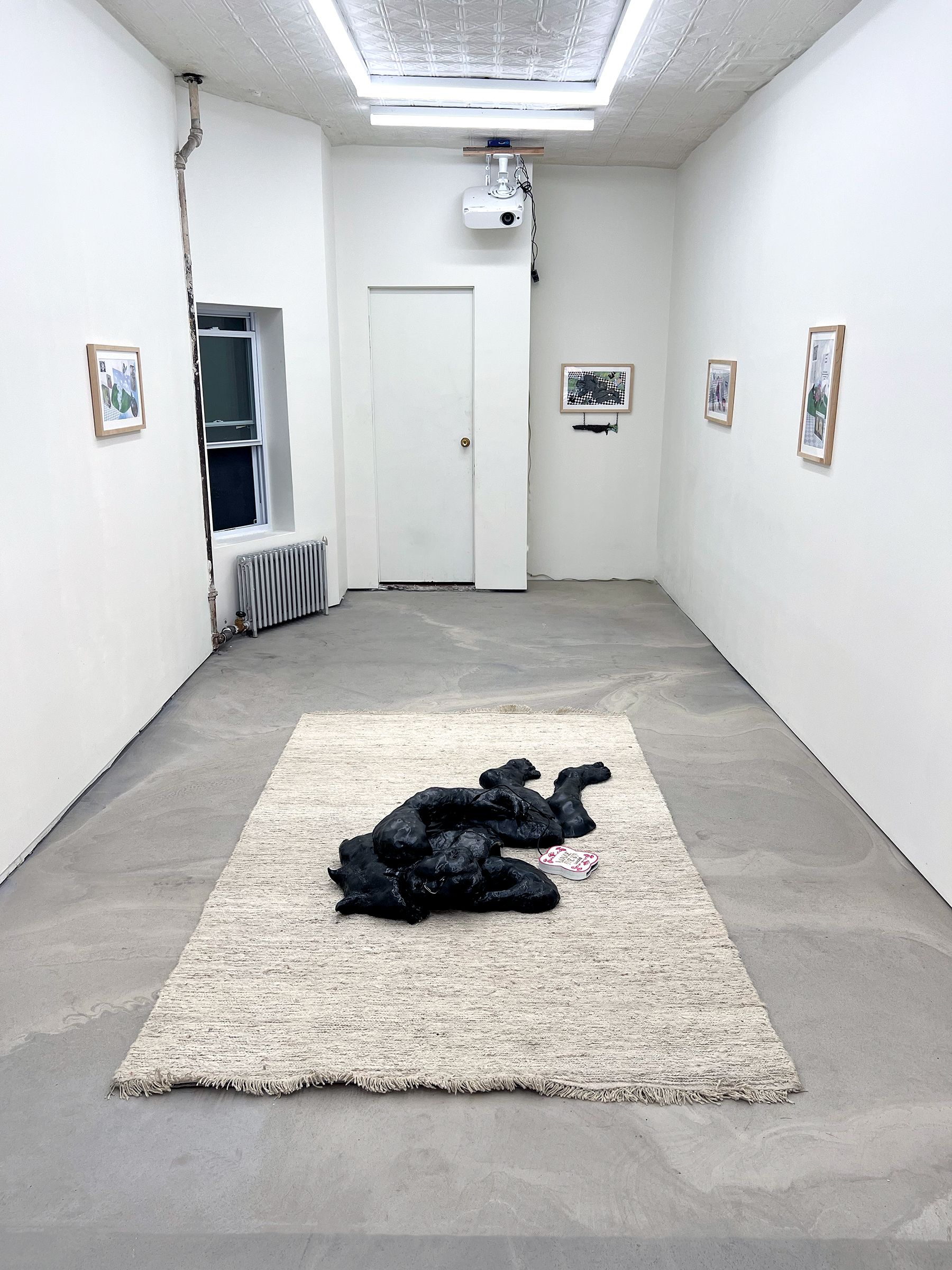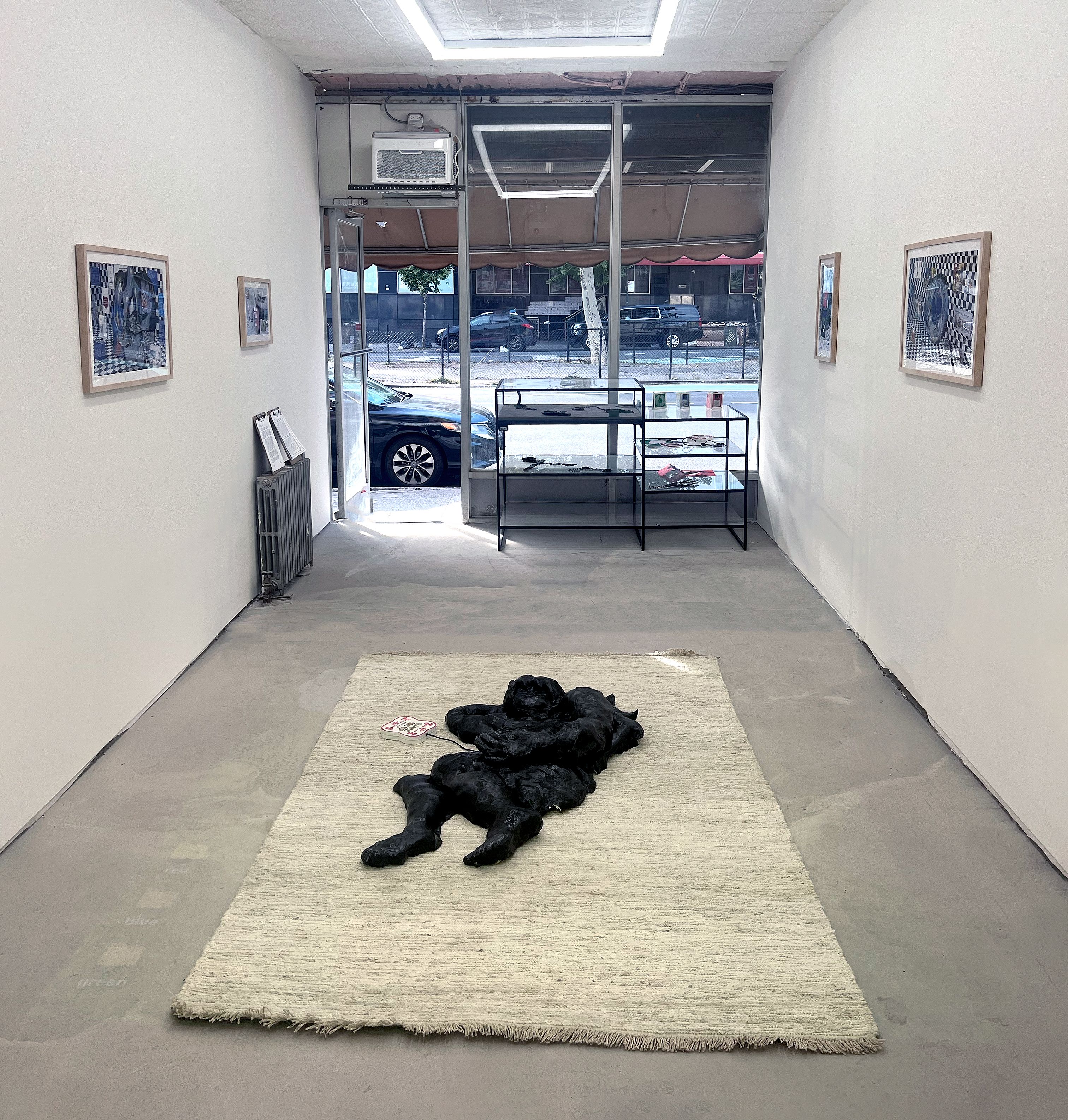Wake Me Up ( inside )
Taehee
October 6th — November 1st, 2022
Press Release

For their first solo exhibition at Blade Study, Taeheee presents Wake me up (inside) — a series of 3D printed sculptures, risographic prints, and video exploring how the technology of Taeheee’s childhood has morphed into 도깨비, dokkaebi.
Dokkaebi are goblin-like, supernaturally occurring creatures from Korean lore who possess extraordinary abilities, like shape-shifting. They maintain a contentious and playful relationship with their human counterparts, at times playing tricks on them, and others, helping them when facing danger or financial hardship. The original form of dokkaebi, a gregarious masculine spirit, is associated with objects of nostalgia, especially antiquated household objects and appliances that have made contact with blood, possibly, as recent studies from The Academy of Korean Studies suggest, menstrual blood.
Legend describes dokkaebi in many different forms: humanoid monsters, poltergeist phenomena, haunted objects. However, the visual depiction of dokkaebi is a contemporary amalgamation of cultural entanglement, colonial erasure, and decolonial revision. Much like Donna Haraway’s Cyborg, dokkaebi is a kind of disassembled and reassembled, postmodern collective and personal self based on its history. The popular imagery of dokkaebi, a horned red skinned hairy man, is a modern byproduct of mistranslation and colonial erasure that started before Japan’s occupation of Korea. After the erasure, Kwak Jaesik’s “Korean Monster Encyclopedia” (2018) recounts the attempt to reclaim dokkaebi imagery in 1980~1990s Korean folkloric academia by gathering all the mythical beings that might be a dokkaebi. One of the few pieces of evidence of dokkaebi’s amorphousness could be found in the translation of Karl Marx’s “Communist manifesto” published from The Dong-a Ilbo in 1947. “A specter is haunting Europe—the specter of Communism.” In that Korean translation, they used the word dokkaebi for “specter” instead of ghost (유령).
Taeheee’s imagined software package,“Dokkaebi 1.0”, represents a container for the memories harvested from the floppy disk’s dokkaebi ok display. 도깨비 is a force, but it’s also a “thing”. As understood by Martin Heidegger’s distinction between objects and things, when an object breaks or is misused, it sheds its conventional role and becomes visible in new ways: it becomes a thing. Thing theory draws upon this notion of productive estrangement to consider the meaning that physical artifacts can have for human subjects.
The napping dokkaebi at the center of the installation lays in a dream state on top of The Bliss, the iconic Windows XP wallpaper introduced by the company in the year 2000. The video sculpture installation revisits the artist’s childhood family desktop while exploring queer existence of dokkaebi in relation to technology, capitalism, colonialism, and the pursuit of decolonialism.
Translation provided by DeepL
taehee is a Korean American transdisciplinary artist whose work explores themes related to the fluidity of kinship, queer body, and grief with computational imaging and publishing. They are a founder of Hyperlink Press (2018-2022) and anti-bone (2023-current). They are a current MFA in Graphic Design candidate at Virginia Commonwealth University. They have completed their BFA in Painting from the Rhode Island School of Design in 2016.They collaborated with various institutions such as Eyebeam, Abrons Art Center, Asian Art Archive in America, MoMA PS1, Booklyn Inc, Yellow Jackets Collective, and Bubble T. They are also a founder of Hyperlink Press, a publication project inspired by the early 2000s queer online communities in South Korea.

WORKS

Taehee
Wake me up (inside), 2022
10:38
Taehee
Dokkaebi 1.0, 2022
34 x 53 x 9 inchesPolymer clay, epoxy, polyurethane foam, floppy disk reader, PLA 3D print, enamel paint


Taehee
Blue folder: Death is another transition, 2022
26.7 x 15 inchesDigital inkjet print on archival paper, polymer clay, PLA 3D print


Taehee
Red folder: Intermingling things, 2022
26.7 x 15 inchesDigital inkjet print on archival paper, polymer clay


Taehee
Red folder: things around us, 2022
17 x 11 inchesRisograph, polymer clay, 3D print


Taehee
Blue folder: all about love- it’s a sekret!, 2022
17 x 11 inchesRisograph, polymer clay, 3D print


Taehee
Green folder: Skeumorphic goblin, 2022
17 x 11 inchesRisograph, steel, Swarovski crystals


Taehee
Green folder: Wake me up (inside), 2022
17 x 11 inchesRisograph, 3D print


Taehee
Blue Folder: Transference, 2022
17 x 11 inchesRisograph, polymer clay


Taehee
Red folder: Dokkaebi! Born!, 2022
17 x 11 inchesRisograph, steel, Swarovski crystals, steel chain

INSTALLATION



